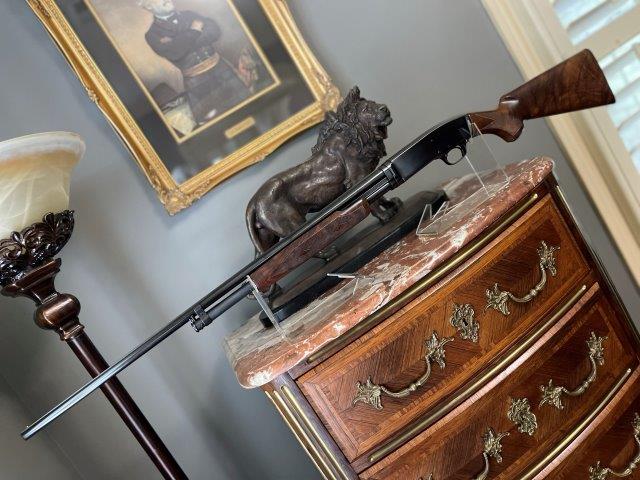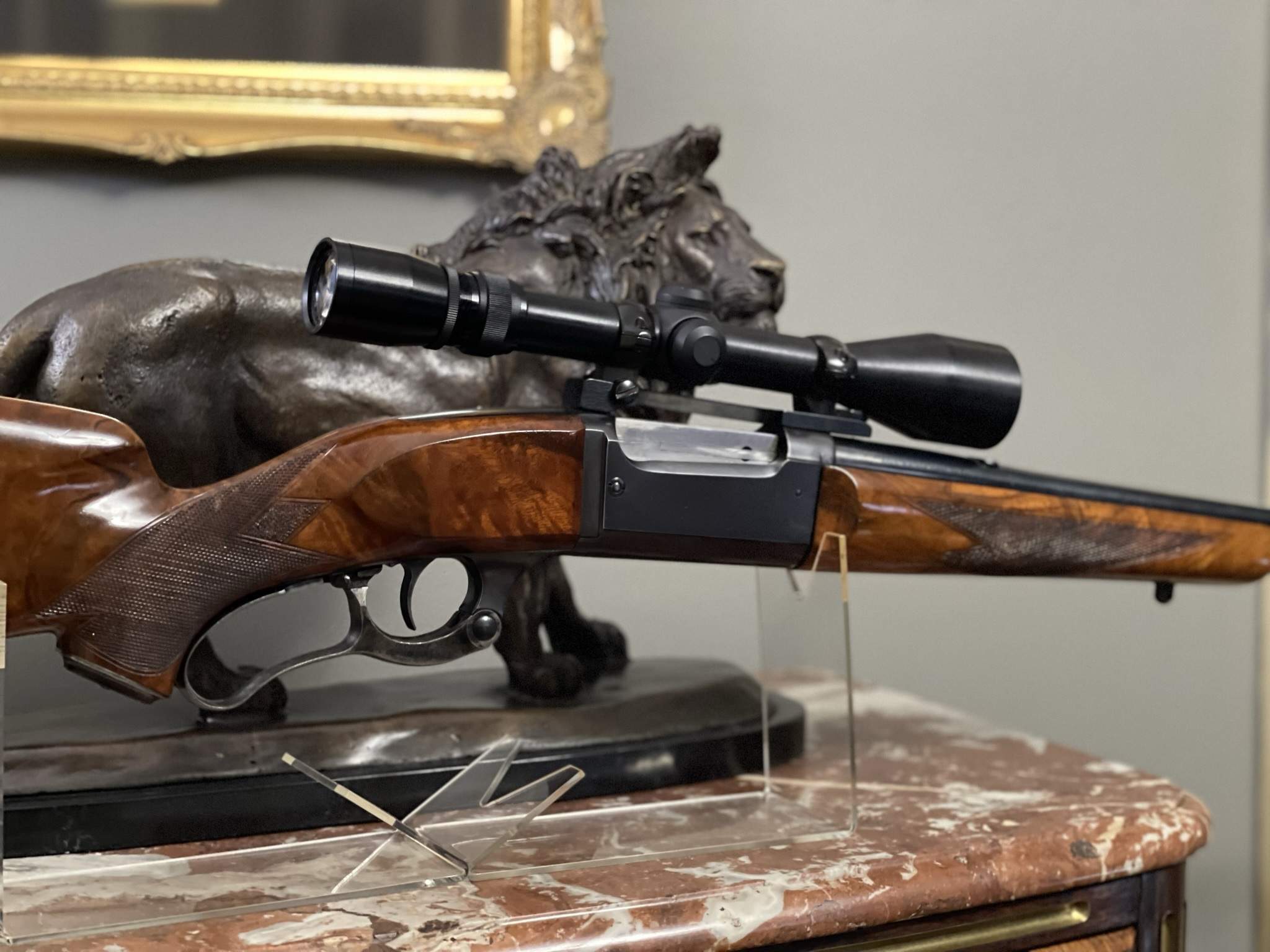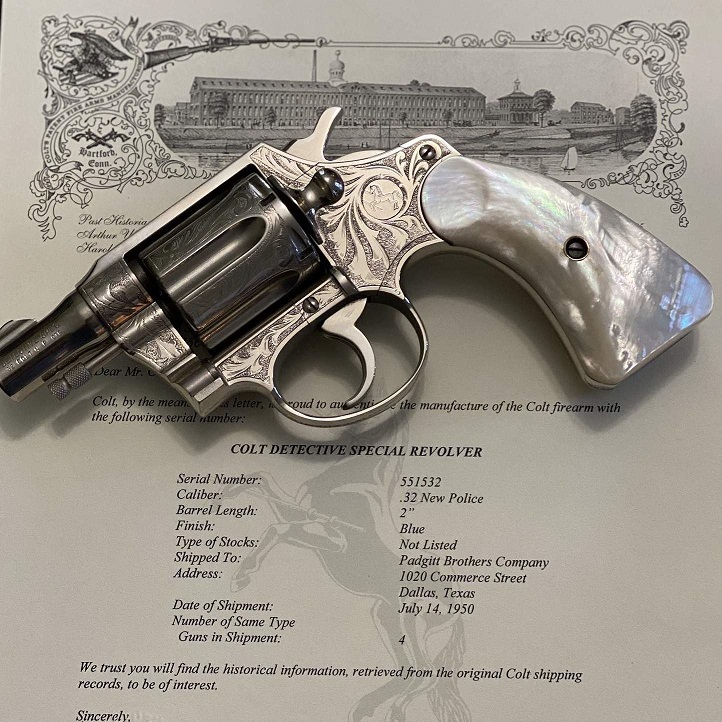When Is A Dime Worth Two Dollars?... When it's a Roosevelt Dime minted from 1946-1964 or, it was invested in the right gun during that time.
The Coinage Act of 1965 eliminated silver from the ciculating United States dime (ten-cent piece). The new coins were made with a far cheaper clad composition that was copper-nickel bonded to a core of pure copper. The new coins came to be known as "Johnson Sandwiches" for their copper interiors.

The First Completed K-22 after World War II
...And it was 1964 that Winchester Guns turned into Johnson Sandwiches
Hesitantly, I single out Winchester here. It wasn't just them, as all gun manufacturers were being told by their accountants that they simply could not continue making dimes that cost 11 cents to produce. You see, the price of silver reached $1.39 per ounce and each dime weighed .080 ounces (2.268 grams).
What happened in 1964?
CNC machining replaced hand forging the metal. Machine stamping took over for hand checkering the wood. Lesser expensive materials were substituted for more costly raw materials. Design changes were made to guns for the sake of saving time or money in the production processes. Every decision at the management level of all gun manufacturers had to be a compromise between making the best product and staying in business and competing. Winchester stopped making some models altogether in 1964, like my Model 42.

1960 Winchester Model 42 Deluxe Grade
Note: A Winchester Model 42 Deluxe Grade purchased for just more than $200 and properly stored and cared for, would easily be worth $12,000+ today.
Smith & Wesson began making a gun out of stainless steel, which was the Model 60 Chiefs Special .38 brought to market in 1965. Machining was and is the cost driver in making gun parts, moreso than the cost of the raw material. The sulfer content of the stainless steel made it easier and cheaper to machine. The first semiautomatic handgun to be made of stainless steel wasn't brought to market until 1977 by AMT.
The thought of making the best gun faded to mass producing an acceptable gun.
President Johnson had about as much control over the Roosevelt Dime situation as Gunmakers had over the Cost of Labor and Materials.
The United States was changing and growing at a rapid pace and the Baby Boom was just one aspect of all the changes taking place. The demand for consumer goods was balooning. Newly developed products were all competing for the raw materials required to make them, TV sets, microwave ovens, mass produced furniture and even automobiles are just a few examples.

"From a Small-Time Collector's Perspective"
5 Significant Events
Important in the Gun Industry...
- 1955 - The ban on German arms-making was lifted
- 1955 – Colt introduces the Python
- 1955 – S&W launches the Model 29
- 1955 – Ruger introduces the Blackhawk
- 1956 – Colt revived the Singla Action Army (SAA)
Having been born in 1960, I'm included in the Baby Boomer category. I did not start buying and collecting guns until 1979, so I missed the opportunity to buy a new gun during the 1946-1964 period and put it up to preserve it. But I have acquired several guns from this period.
Almost Everything in Life has a Good Side and a Bad Side
Believe it or not, there was a good side to all of those cost-cutting and time-saving mass production measures. It meant that more people had access to guns.
A quick analysis of my eleven guns from this period reveals that they would have sold for approximately $899 (average $82 each) if I had bought them new at the times. I paid approximately $15,400 (average $1,400 each). If I had simply bought and saved $899 of Roosevelt Dimes, they would be worth $17,980.
So which would have been the better investment, Roosevelt Dimes or the 11 Guns from my collection?
Oh, I'm sure there are guys out there that would have enjoyed collecting the coins, but there is no way a coin collector could have the life experiences that I've enjoyed with family and friends with these old guns. Almost every old gun collector you ask, will tell you they never viewed their guns as an investment.

All of the guns from the Baby Boom Period 1946 to 1964 have the benefit of technological advances and lessons learned in World War II. Those guns also all exhibit the wonderful hand craftmanship that went into making them. Remember what I said about everything having a good side and a bad side? Well, during the war, manufacturers learned a lot about how to mass produce war-time products as quickly as possible. It was only logical that the influence would gradually creep into the manufacturing of civilian goods.
By 1964, those first-born Baby Boomers were turning 18 years-old. The need for mass production and the pursuit of profits made it inevitable that we would lose this golden period of craftmanship. Nobody can have a greater appreciation for the craftmanship of the time, and I think anyone, even a novice, can see the difference in the grips on a modern S&W gun compared to this period.
3 Significant Events
Remington introduced the ...
- 1950 - Model 870 Slide-Action Shotgun (11 million sold)
- 1962 – Model 700 Bolt-Action Rifle (5 million sold)
- 1963 – Model 1100 Automatic Shotgun (4 million sold)
The Resulting Post Baby Boom Years
Over the years, the Colt Custom Shop and Smith & Wesson's Performance Center bridged the gap between production handguns and turning out some extremely nice custom firearms. Third Party Distributors like Lew Horton and Talo commissioned some of the finest guns produced in the modern era. Custom Shops by Ed Brown, Les Baer, Bill Wilson and others came into being in order to improve on the mass produced guns of the Post Baby Boom Era.
Summary
Two or three years ago when I made the decision to reduce the number of guns in my collection, I decided to first sell every Pre-WWII gun in the collection (which I did, except for one). Narrowing the collection to only Post-WWII guns didn't really reduce my focus that much. The thought crossed my mind to limit the guns to this period, 1946-1964.
That thought was quickly abandoned, because I have two Colt revolvers from the 1970s that I can't part with. I also have four Colt semi-automatics from the 70's, 80's and 90's that I won't part with either. Then there's that Smith & Wesson made Walther (Talo) from the 00's.
Conclusion: There are too many great guns that arrived after the Beatles to ignore. Added 05/03/2022 - I actually have 12 guns from this period, I forgot about the 1961 Colt Scout. The 1960 Winchester Model 42 was acquired after I wrote this article, but I had to come back and include a photo as an example of a gun that the gunmaker just quit producing in 1964.
